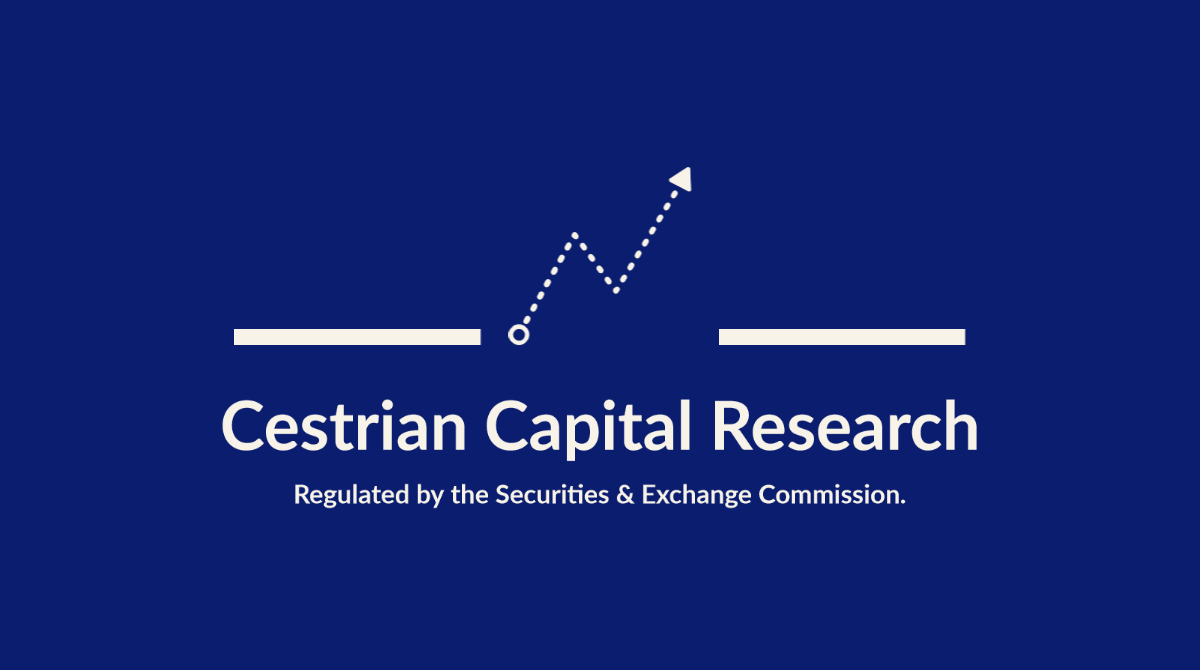How To Win At Leveraged Crypto

DISCLAIMER: This note is intended for US recipients only and, in particular, is not directed at, nor intended to be relied upon by any UK recipients. Any information or analysis in this note is not an offer to sell or the solicitation of an offer to buy any securities. Nothing in this note is intended to be investment advice and nor should it be relied upon to make investment decisions. Read our full disclaimer, here.
Don’t Be Blinded By Science. Or Memes.
by Alex King, CEO, Cestrian Capital Research, Inc.
If you want to try to win at leveraged crypto, you need to understand how leveraged crypto works. If you don’t understand how it works then you may want to think twice about why you are getting involved in it. Because if the phrase “leveraged crypto” doesn’t make you think, yikes, then you aren’t doing it right.
Leveraged cryptocurrency companies like Strategy $MSTR, BitMine Immersion Technologies $BMNR, SharpLink Gaming $SBET and others are in truth very simple entities. You can safely ignore all the meme-foolery on offer; all the talk of Bitcoin yield; any concept of permanent and lasting value for decades to come.
This isn’t the next Microsoft or Nvidia you are buying here. They are single-asset holding companies which own a commodity-like asset and use cheap money to goose returns. There is nothing wrong with that. People like to get on their high horse about it, but who cares? The only important thing is to know what you own, and to act accordingly.Now, the fact that the $MSTR stock chart looks like this below tells you that just because the strategy is in fact very simple, and the promotion of the company utterly relentless, that does not of necessity make it a bad investment or trading idea. For all those high-horse naysayers happy to tell everyone that Mr. Saylor is a this or a that and that $MSTR is going to 0 before anyone can put their fingers in their ears and say Satoshi three times, there are a lot more people that have just ridden the MicroStrategy rocket all the way to the moon.
(You can open a full page version of this chart, here).
As you know, a number of companies are now attempting to achieve something similar in the Ether market. The two largest players by ETH holdings are BitMine Immersion Technologies, $BMNR , and SharpLink Gaming, $SBET . Each of them very recently adopted an ‘Ether Treasury Company’ model (ie. aiming to be the “MicroStrategy Of Ether”).
Here’s how they’re doing.
Now, to make a success of a single-asset levered investment company you really only need a handful of things.
- Is the asset itself (a) in demand (b) supply-constrained (c) not easily substituted and (d) liquid and easily valued?
- Is the annual cost of capital used to buy the asset - that means both the debt and any equity issued - lower than the expected rise in value of the asset in question over say the year following each purchase? (That’s the real estate model, no different. If you can rent a building out for a better yield than you are paying your lenders, you pocket the difference. And if you can get a capital appreciation rate higher than your loan cost, you pocket the difference. This is what Mr. Saylor means by ‘Bitcoin Yield’. It’s not really yield, but it is or can be a return).
- Is the management team populated by skilled capital markets operators?
Let’s think about $MSTR . Bitcoin - in demand, yes, supply-constrained, yes, easily substituted, no, liquid and easily valued, yes. Cost of capital has in fact been lower than where the asset has in fact become valued, not least due to the successful promotion of the opportunity - and hence of Bitcoin itself - by the skilled capital markets operators Mr. Saylor and colleagues. So, that MSTR has been a big win should not be a surprise.
What about the new Ether treasury companies? Let’s think it through. Ether - in demand? Yes historically but going forward? Well, I think yes with bells on as the Ethererum blockchain is likely to be a cornerstone of the tokenization of assets. And the only way to pay for Ethereum transaction processing fees is to pay with Ether. Supply constrained? Not in the same way as BTC but, as some Ether used to pay for those transaction processing (“gas”) fees is burned up (=removed from circulation) then there are some self-limiting properties at work. Is the asset liquid and easily valued - it is. Cost of capital at present? The management teams at $BMNR and $SBET believe that the cost of capital available to them easily justifies using that capital to accumulate ETH. And finally - managerial skill. There is going to be a competition for talent in this regard. $BMNR ’s recruitment of Tom Lee of @fundstrat , and its addition of Peter Thiel to the shareholder roster is a clear attempt to woo investors on this front.
So the scene is set to see whether these new Ether Treasury Compnanies can spin up the flywheel (raise capital; accumulate ETH; hope that ETH rises in value; hope to raise capital at a lower cost each time; rinse and repeat) etc.
I believe they can - the best of them at any rate. You’ll know if they are achieving these goals because we will see their stock prices rising - it’s not difficult to measure success in the game they have chosen.
For disclosure, I am long $BMNR, $SBET, $BTBT, $BTCS and $ETHE personally.
Cestrian Capital Research, Inc - 20 July 2025
